年齡無界_青銀的生活及工作場域
Age Has No Boundaries: The Living and Working Spaces of Youth and Seniors
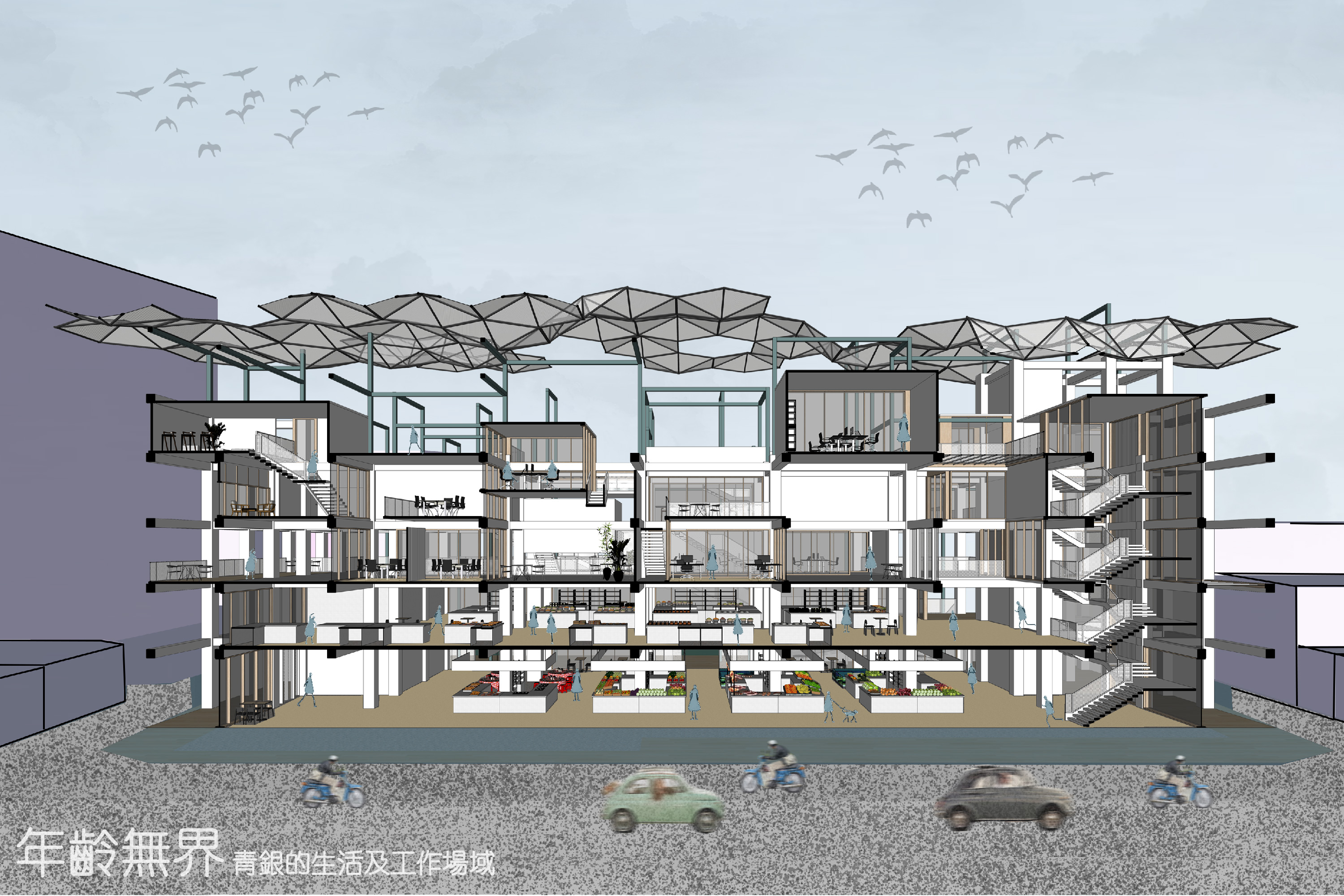
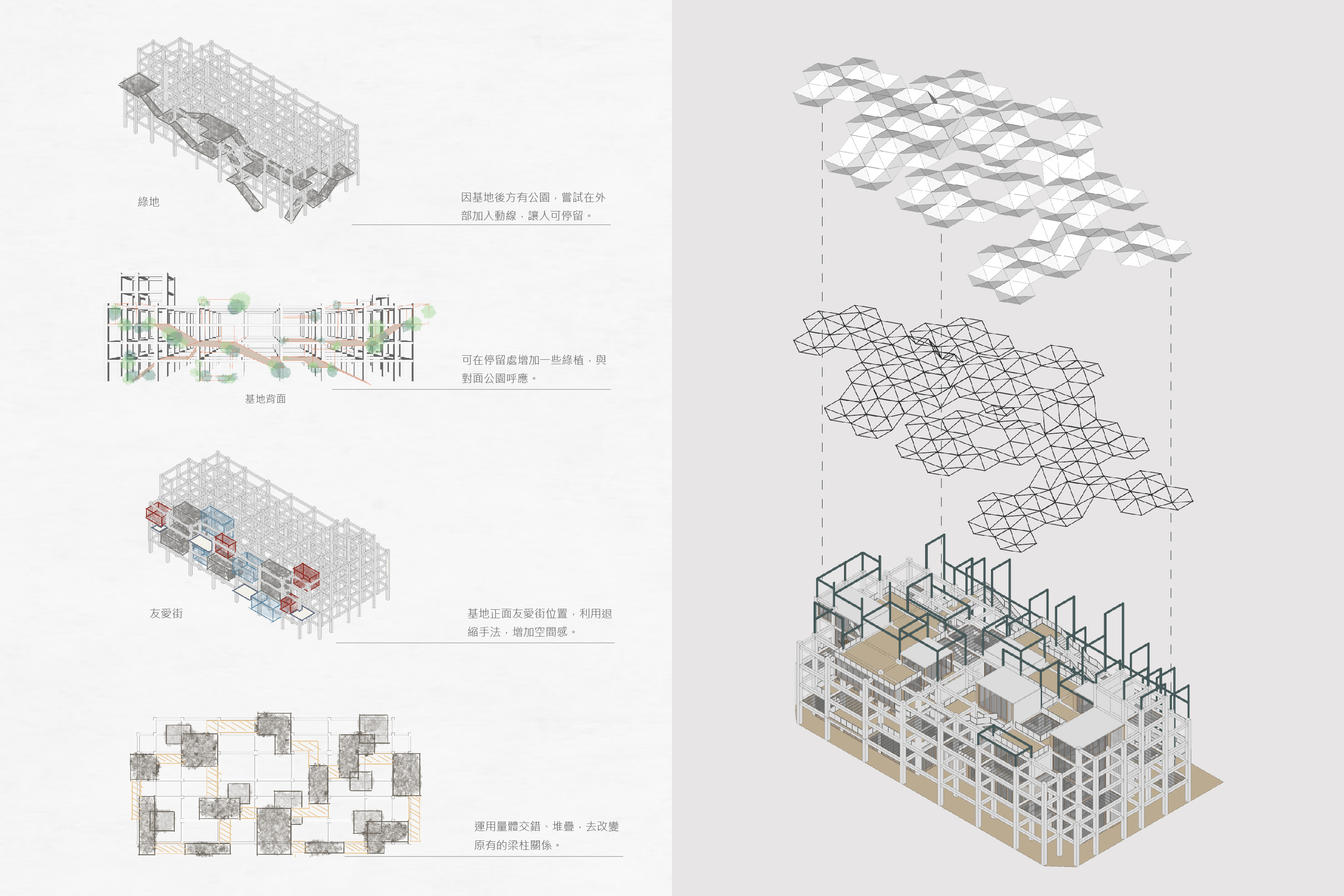
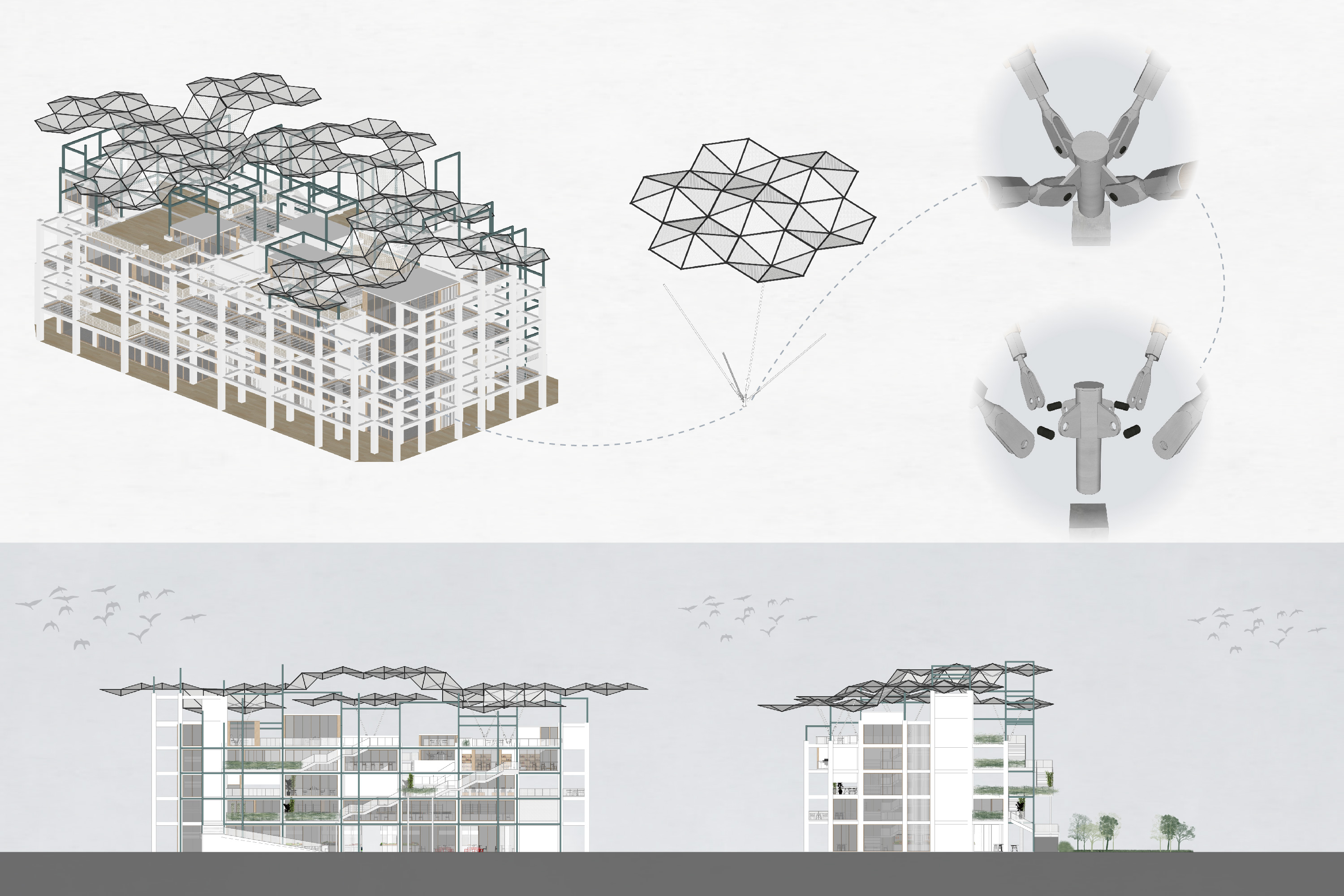
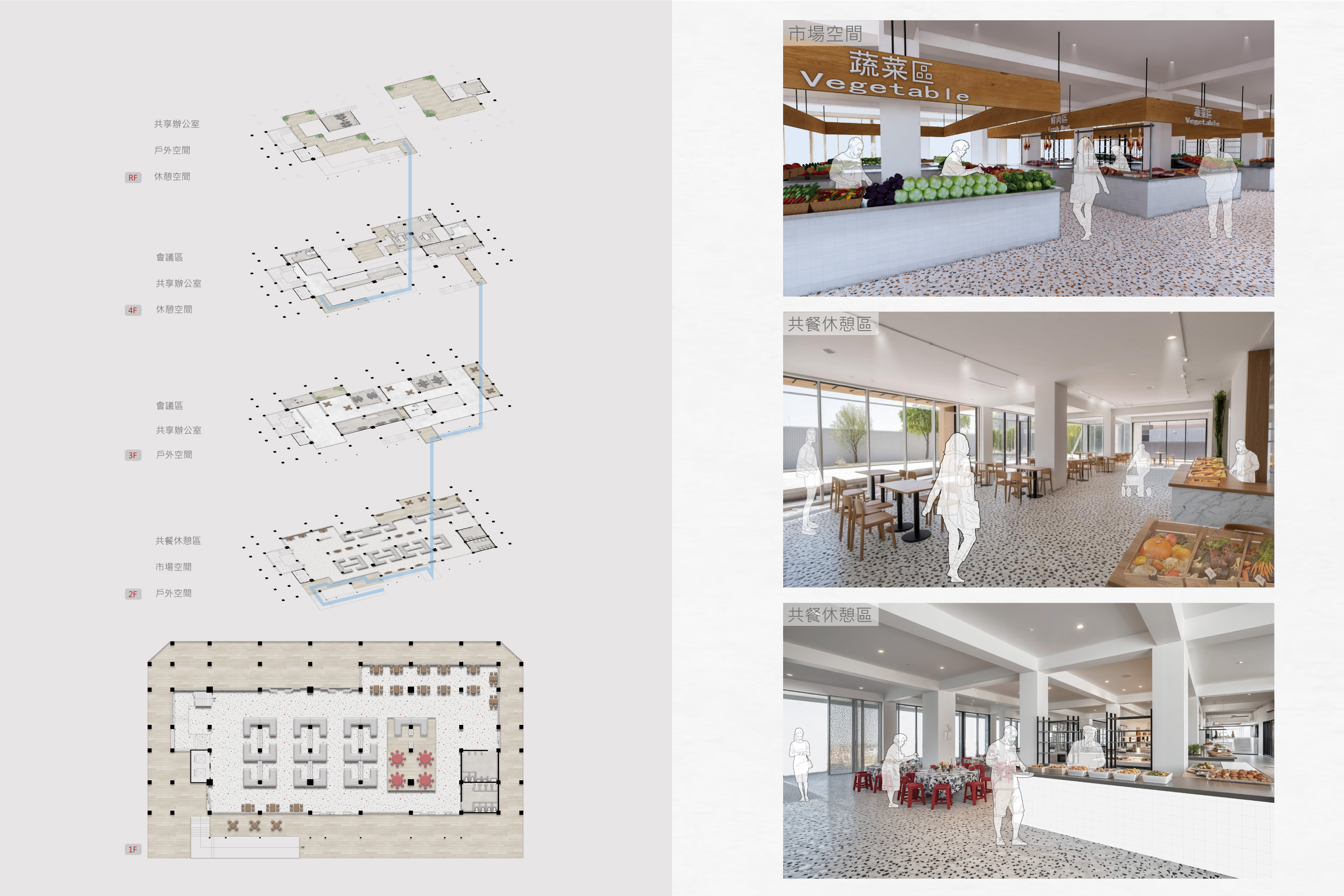
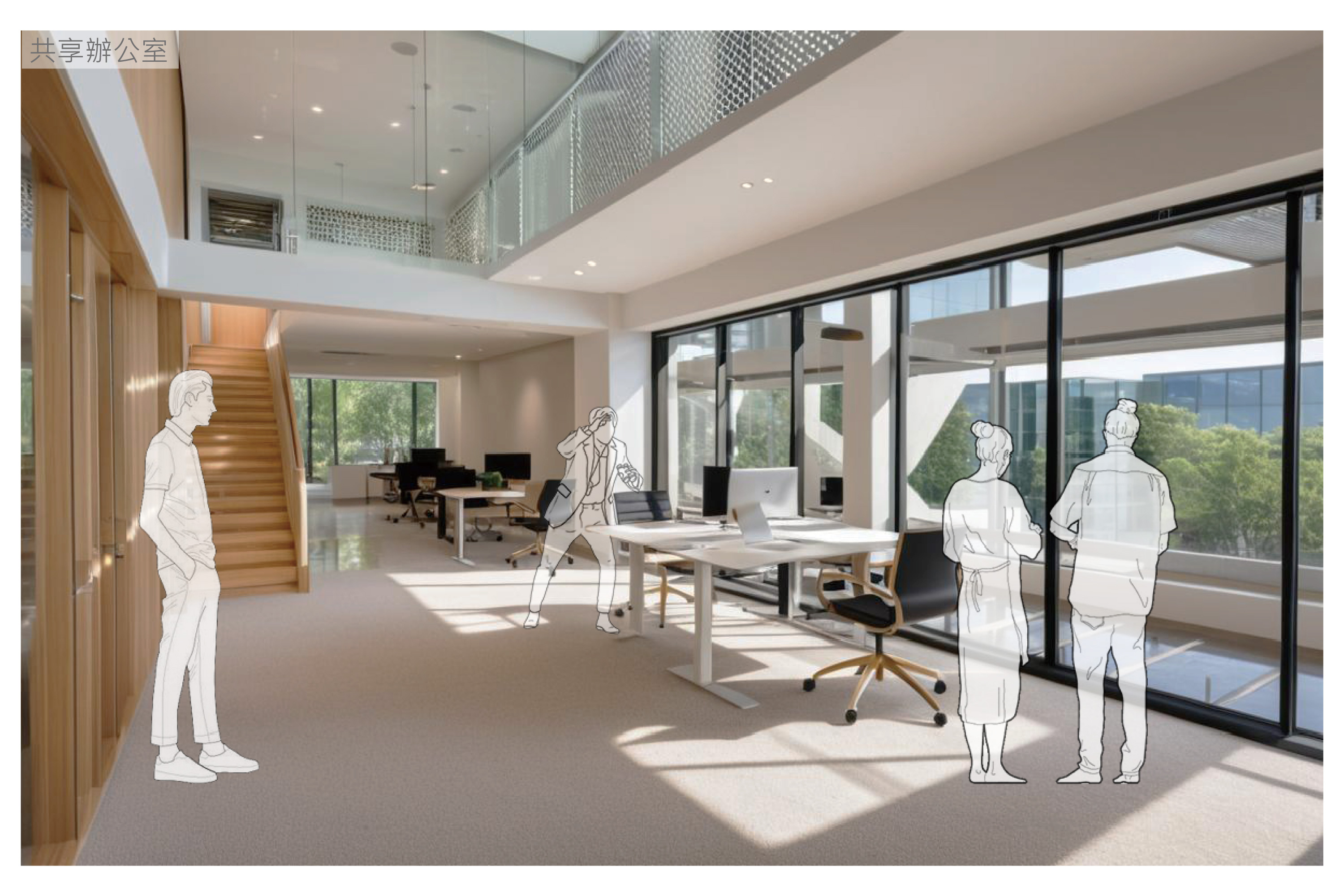
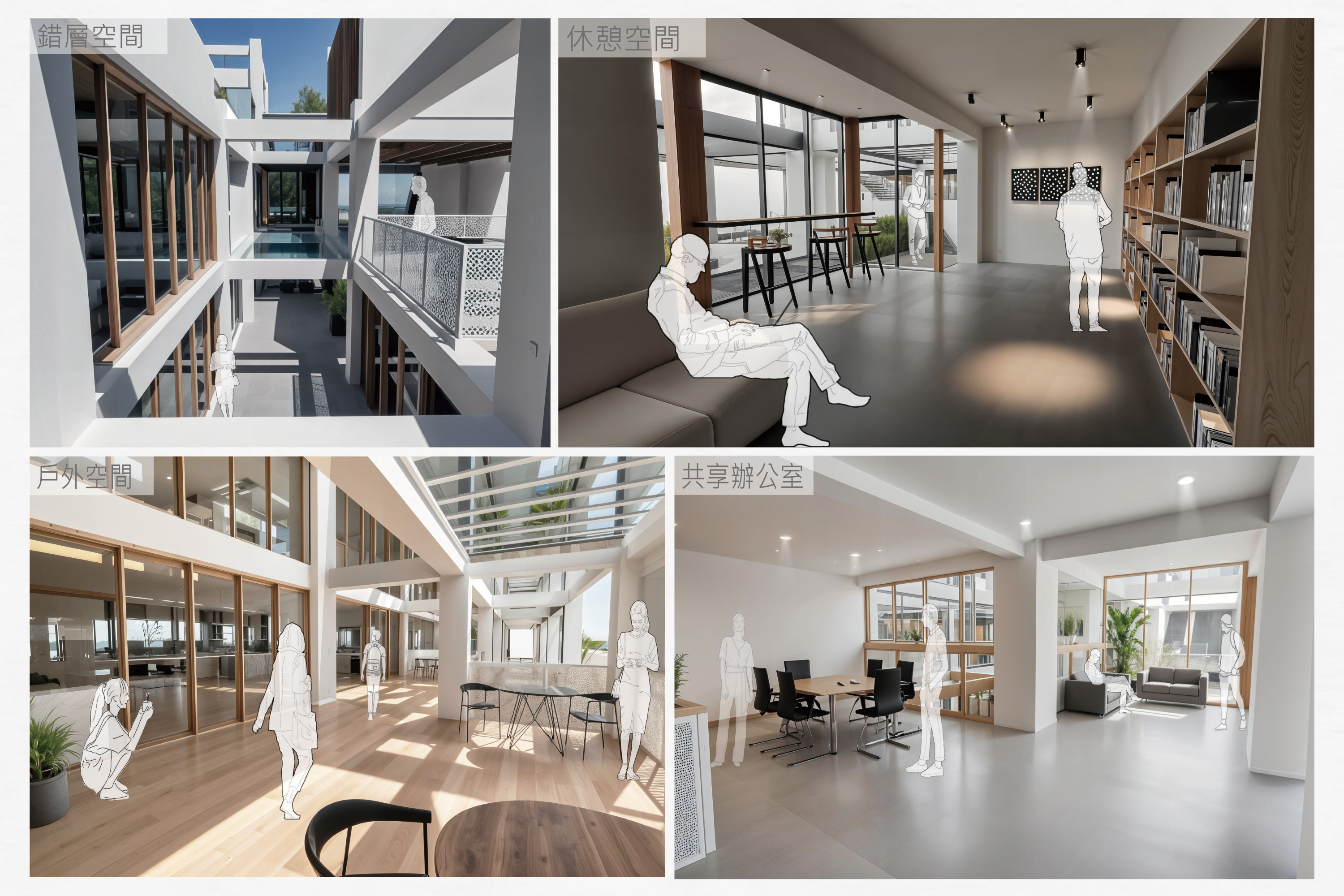
隨著台灣及全球高齡化問題日益嚴重,老年人口比例不斷上升,退休後的生活逐漸成為一大挑戰。隨著醫療技術與生活水準的提升,老年人壽命延長,但同時也帶來了生活重心的改變。如何幫助老年人適應退休後的生活,使他們能夠充實並有意義地度過這一人生階段,成為社會關注的重要議題。
針對高齡化及人口結構的改變,推動不同年齡層之間的交流與合作至關重要。勞動力的萎縮與代際隔閡凸顯了跨代合作的必要性,不僅能創造新的社會價值,還能結合青年人與中高齡族群的不同經驗與特質,共同應對人口老化的挑戰。
創建友好的共享空間,將年輕人與老年人結合,促進他們在日常生活中的學習、合作與成長,增強社會整體的凝聚力與互動。這樣的空間設計可以提升社會的包容性,讓不同年齡層的人能夠互相理解並建立互助關係。此外,為了提升公共空間的吸引力與連接性,透過創新建築設計手法,打破傳統結構的單調性,增強空間的開放感與視覺吸引力。這樣的設計不僅能讓人們更願意停留,還能促進各年齡層之間的互動,創造更加和諧的社區環境。
Age Has No Boundaries: The Living and Working Spaces of Youth and Seniors
As the aging population in Taiwan and globally continues to rise, life after retirement presents significant challenges. Longer lifespans, thanks to advancements in medical technology and living standards, also bring changes to life’s focus for the elderly. Adapting to retirement and ensuring the elderly live a fulfilling, meaningful life has become an important social issue.
To address aging and demographic shifts, promoting communication and cooperation between different age groups is essential. The shrinking workforce and growing generational gap make intergenerational cooperation vital. This not only creates new social value but also combines the strengths of youth and older generations to tackle the challenges of population aging.
Creating shared spaces that unite young people and the elderly can encourage learning, collaboration, and growth. This fosters social cohesion and interaction, improving inclusiveness by helping different generations understand each other and build mutual support. Additionally, innovative architectural designs can enhance the appeal and connectivity of public spaces by breaking traditional structural monotony, promoting openness and visual attractiveness. Such designs not only encourage people to stay longer but also facilitate greater interaction across age groups, cultivating a more harmonious community environment.
崑山科技大學 空間設計系
(四年級) 指導老師 蕭紋娉
沈豪慶